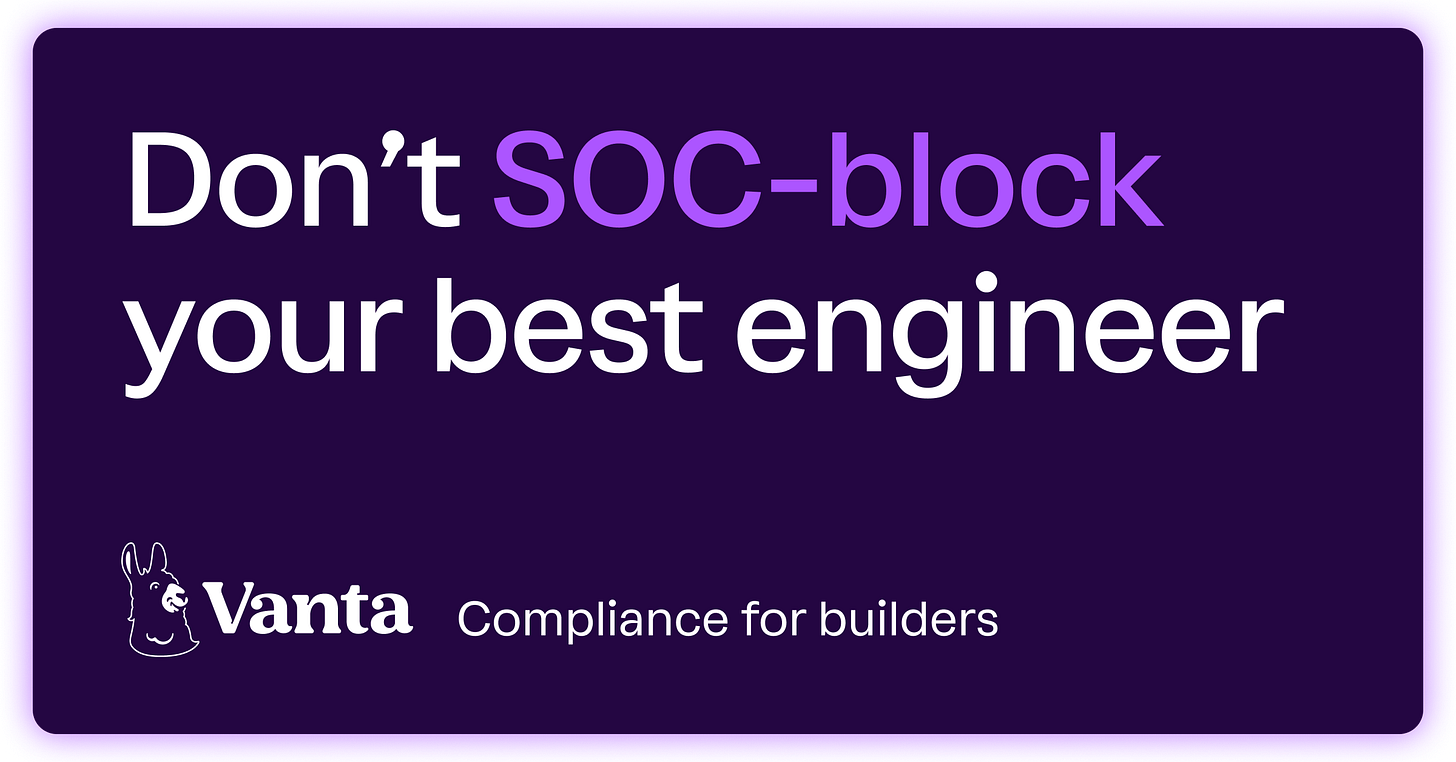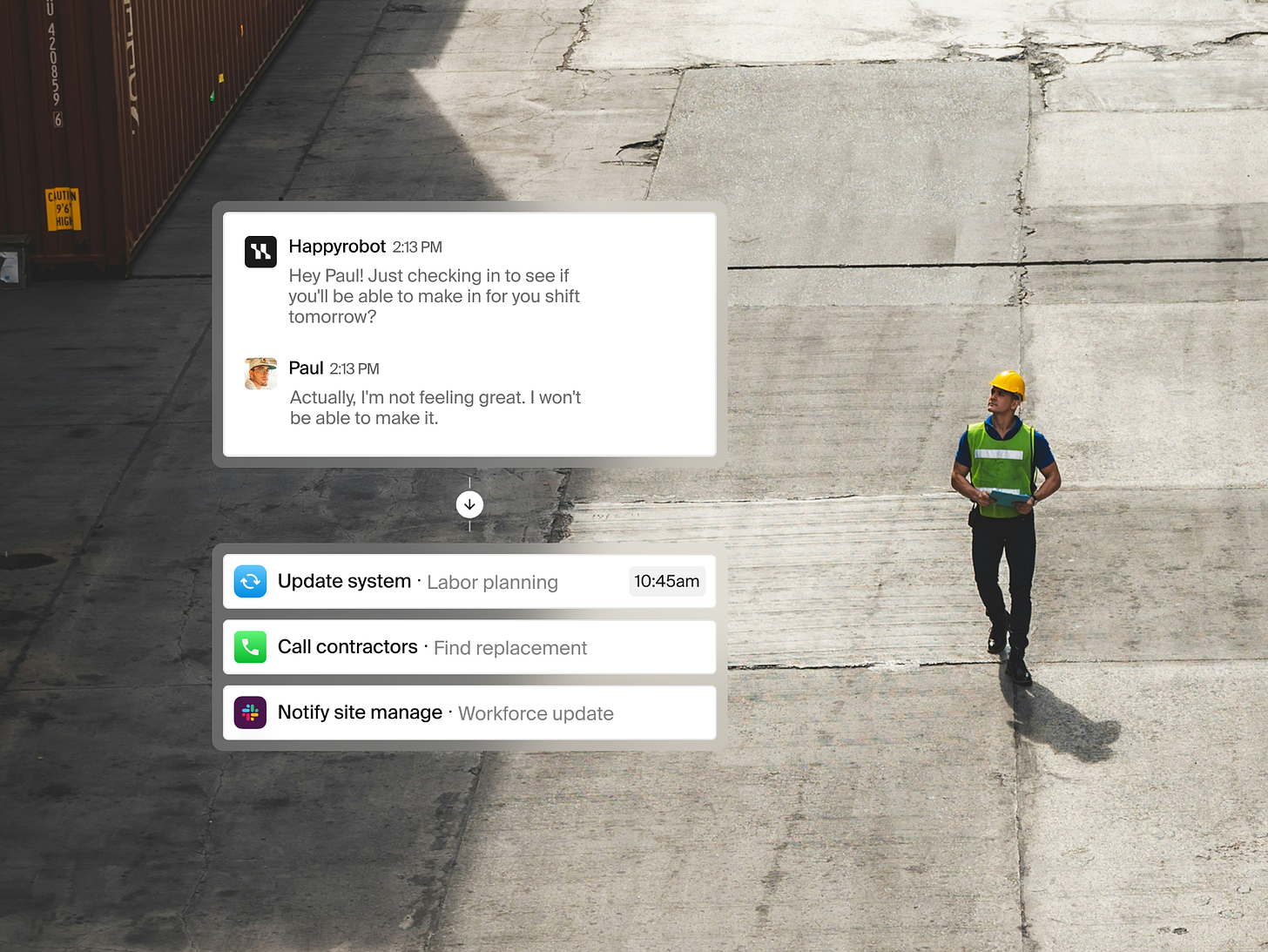The Spanish Founder Trio Turning On AI Agents For Logistics Giants
Startup HappyRobot, led by Pablo Palafox, his brother Javi and friend Luis Paarup, has raised a $44 million Series B to bring real-world AI benefits to shipping and freight.

The Upshot
Two years ago, startup founder Pablo Palafox had just applied to Y Combinator when he met an investor from his home country during a pickup soccer game.
For Palafox, originally from Spain, the VC – Adeyemi Ajao, the co-founder and managing partner of Base10 Partners – was only the second of his countrymen he’d met in the Bay Area, after his brother, Javier. As they went through YC and afterward, they kept playing each Monday, one of the only times Ajao saw the Palafox brothers not working on their startup, HappyRobot.
“I would say, ‘hey, you guys should breathe every once in a while, you’re working seven days a week,’” Ajao tells Upstarts. “You could just tell that nothing else was on their minds.”
The idea that Pablo and Javi Palafox were chasing, alongside a third Spanish co-founder, Luis Paarup: building a digital workforce for the supply chain and its operators, utilizing AI to automate otherwise repetitive and high-volume communications, and eventually entire workflows from managing inventory to fielding sales calls, and handling basic service requests.
An airplane manufacturer refreshing their ERP software to check if a crucial part was still on time, and wondering whether to nag the provider again. A freight carrier whose truck just broke down and needs to find the cheapest, fastest repair option. A broker looking to adjust its pricing on its busiest route.
Logistics is full of thousands of these puzzles each day. HappyRobot’s CEO has thrown himself into helping to solve them. “It’s a very hard and complex problem, and I take my hat off to these guys. It’s amazing, the work of logistics and the supply chain,” Palafox says. “We want to stress the fact that it’s going to be a long process, but we can help you change the way that you do work.”
Since launching its voice agent at the beginning of last year, HappyRobot now works with some of the industry’s most important companies, including DHL Supply Chain, trucking company Werner Enterprises, and transport business Schneider. Eight of the top 10 brokers and two of the top three ocean carriers use HappyRobot, Palafox says.
Revenue has increased more than 10x since HappyRobot announced its $15.6 million Series A led by a16z in December and is “well into” the eight figures, Palafox adds.
Now in a full circle moment, San Francisco’s Spanish techie soccer players are teaming up. Base10 is leading HappyRobot’s $44 million Series B funding round, with participation from a16z and YC, as well as strategic investors Tokio Marine, WaVe-X and World Innovation Lab.
HappyRobot isn’t disclosing its valuation, but a source with knowledge of the deal tells Upstarts the startup is valued at about $500 million following the raise.
More interesting to us than its funding details, however, is HappyRobot’s emerging example of a startup gaining meaningful traction by bringing AI agents to a vertical. Its door opener so far has been voice AI, an area we’ve covered extensively recently, with stories on startups including careCycle in Medicare, and Delfa in clinical trials.
Bigger and further along, HappyRobot is a startup that founders in other niches are looking up to. Its natural progression now, from simple voice agents to multi-modal communications and, eventually AI ‘workers’ that can carry out workflows on their own, provides an early playbook for the wider startup ecosystem.
“Customers are looking for an AI partner, less so a point solution,” says Palafox. “They want a holistic approach for their problems, one that can also go to them in-person to figure things out.”
More on how HappyRobot is doing it – and Palafox’s advice for fellow founders – below.
Presented by Vanta.
You need compliance to sign deals. But you also need your engineers to build the product. Enter a third option: make Vanta your first security hire.
Vanta uses AI and automation to get you compliant fast, simplify your audit process, and unblock deals — so you can signal to potential buyers that you take security seriously.
Plus, Vanta scales right along with you (backed by startup-speed support every step of the way) so you're not stuck ripping out one of those check-the-box solutions later...and rebuilding your whole program under pressure.
That's why top startups like Cursor, Linear, and Replit get secure early with Vanta. Claim a special offer of $1,000 off Vanta when you book a demo today.
Backing in
A budding musician as a kid, Palafox gravitated toward technical pursuits while at the Universidad Politécnica de Madrid, earning a joint master’s degree from that university and the Technical University of Munich, where he worked on computer vision research.
Aside from a summer internship at Facebook in its virtual reality division, Palafox stuck around at Munich until 2022, earning his PhD while deciding to work on a startup with his brother, Javi. The older Palafox had ended up in logistics, working at distributor Deoleo first in Mexico, then Texas, where he eventually became the CFO of its North America unit.
Rounding out the group was Palafox’s school friend, Paarup, who had helped him get involved in robotics on an underwater robotics team, and who became HappyRobot’s third founder and CTO. By the time they teamed up, initially in Germany, Paarup was working in a technical role at Hewlett Packard Enterprise back in Madrid.
Success with their YC application pushed HappyRobot to relocate to the Bay Area, but their initial idea was different. As noted in a Spanish-language interview at the time, HappyRobot started out with a different name, focused more on computer vision use cases. By batch’s end, they had pivoted to a vertical use case for AI chatbots that leveraged Javi’s business network in logistics.
HappyRobot got up and running with a voice agent that could field calls for freight brokers and forwarders, helping them manage a higher volume of interest and drop fewer calls. While off-the-shelf voice tools were already popping up, the founders decided to fine-tune their own large language models, initially working with Mistral and Meta’s open-source Llama models, then eventually OpenAI’s GPT-4 model series.
“What separated us technologically is that we built a lot in-house,” Palafox says. “Engineers have a lot of fun building with us.”
Working with one customer initially as a design partner, Palafox and co. started to show up at logistics conferences and events to tout their early product. Once one was in the door, the startup’s CEO showed up onsite to implement its tools, effectively acting as its first forward deployed engineer (FDE).
Soon, freight brokerage reps were seeing 25% better coverage, meaning higher sales and margins, using HappyRobot’s chatbot; the startup has since expanded to add email, text, WhatsApp and in-browser agents, too.
The pitch is simple, says Palafox: “How can we make your ops people be 20x better?”
Human intervention
Today, HappyRobot’s team has grown to just under 70 people; a big chunk of those are more FDEs, as well as account managers that the startup calls ‘deployment strategists’.
Its product has evolved, too, into three layers: the communications bots at the most tactical; agentic workflow software as a middle one, with ‘AI workers’ triggering those calls or tasks; and an even more zoomed-out view still in development, which Palafox calls the “frontal lobe” – an operating system for proactively suggesting and making improvements based on a customer’s data.
“Voice is still the most shiny piece to date,” Palafox admits. But where HappyRobot can prove more valuable – and has the best chance of proving different from competitors playing catch up – will be in the more end-to-end offerings.
With the funding, HappyRobot plans to work on AI agents that can self-audit and correct; it also plans to make it easier for enterprise customers to customize and train their own agents from the template ones provided by the startup, to better conform to their own data and procedures. The company has also recently started working in utilities with energy companies, meaning its vertical focus can widen.
It faces two natural questions: is HappyRobot displacing workers at these customers? And does its technology really work?
On the latter, HappyRobot’s heavy use of FDEs is a signal that companies, at least in logistics, aren’t turning on such AI tools out of the box. The startup’s engineers essentially vibe-code last-mile solutions for big customers in different areas, such as shipping or freight forwarding, Palafox admits. It’s a little like how Palantir got so big, but less heavy on the services than the public software heavyweight, he claims.
But prompt engineering and human tinkering is still required for these systems to really work, for now. “Transparently – and this is not only us, it happens at every AI agency company deploying use cases in the wild – that’s the reality,” Palafox says.
Still, the founder insists the tools works, especially when connected to a customer’s productivity software, such as Slack and Teams. HappyRobot’s conversion rate from pilot to contract is above 95%, he claims; when customers have chosen not to move forward, it’s usually because of budget, he adds.
Much of the startup’s business today comes from word-of-mouth and users moving from one company to another, although HappyRobot’s enterprise focus means it isn’t trying to be a true ‘product-led growth’ company.
At Base10, Midas List investor Ajao says that his firm was heartened by its own diligence calls with customers, who told the VCs that they “know it’s not magic” and were closely following HappyRobot’s technical capabilities and limitations to give product input.
“It’s very much a Rorschach test. If you believe that agents aren’t going to be able to do 10% of what they promise to do, then this will not be a very interesting investment,” Ajao says. “But this might be the company that crafts the path, and the playbook, for the rest of the agentic companies in other verticals.”
For any founders looking to try their own, Palafox has two pieces of advice. First: start with a narrowly-focused vertical, and don’t bite off too much before you’ve nailed it down. Second: show up. “Just go wherever your customers are. For us, conferences have been a huge enabler,” Palafox says. “Then you go to their offices, but you need them to open the door.”





I like their closing advice. With the technology like this, while the prospects are still developing a required comfort level to invest in this tech - you want to be with them along the way, educating them and getting them comfortable with what your company stands for.
Also, cool to see more promising European start ups! (Granted they moved to SF haha)